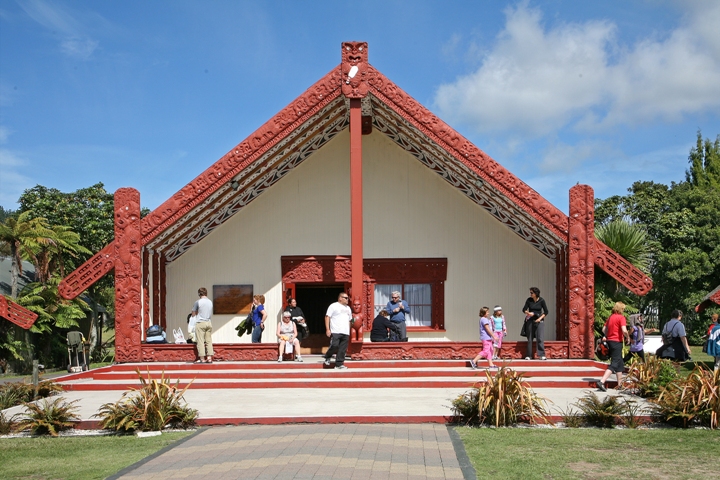Five Tairāwhiti Marae Relocate to Safer Locations with Crown Support After Severe Weather
The Crown’s commitment to supporting other marae in need of relocation is also evident in its collaboration with two Kahungunu Marae, Tangoio and Petāne, in Hawke’s Bay.

- Country:
- New Zealand
The severe weather events that struck the North Island in early 2023 left a lasting impact on many communities, particularly on marae in vulnerable areas. Five Tairāwhiti marae, including Puketawai, Hinemaurea ki Mangatuna, Okuri, Takipū, and Rangatira Marae, are among the hardest hit. These marae, deeply connected to their respective whānau and hapū, have now made the difficult but necessary decision to relocate to safer locations. The relocation efforts are being supported by the Crown, which has provided a substantial support package to help these marae rebuild and ensure the safety of their communities.
Mark Mitchell, the Minister for Emergency Management and Recovery, and Tama Potaka, the Minister for Māori Development, have both affirmed their commitment to supporting the relocation process. According to Minister Mitchell, the local council designated these marae as Category 3 – High Risk, meaning they were deemed unsafe due to the unacceptable risk to life posed by future extreme weather events. With the safety of their people at the forefront of their decision-making, the marae trustees, together with their whānau and hapū, have accepted the Crown’s assistance to secure new locations for their marae. These new sites will be located in close proximity to their original locations, staying within or near their respective tribal boundaries to maintain their cultural and spiritual connections.
Minister Mitchell emphasized that while this relocation is a significant step, the decision was not made lightly. The impact of the devastating weather events on the marae communities has been profound, and the decision to relocate comes from a place of ensuring the long-term safety and security of their people. "The decision to relocate is not an easy one. It is about safeguarding the lives of those who might otherwise be at risk in the face of future extreme weather events," Minister Mitchell said.
Minister Tama Potaka also stressed the importance of taking a thoughtful approach to the relocation process. "The relocation works will take time," said Mr. Potaka. "The rebuild, including the construction of wharenui and whare kai where necessary, will span the next two years or more. For some marae, this means a complete rebuild from the ground up." While the process will be challenging, it provides an opportunity to ensure that these marae are rebuilt to withstand future climate events and to help restore the vitality of local communities.
The relocation will also contribute to economic development in the region. The project is expected to create new jobs and support local small and medium-sized enterprises (SMEs). This, in turn, will contribute to strengthening the construction capabilities on the East Coast, particularly as a result of initiatives like Toitū Tairāwhiti, which have helped foster greater construction capacity in the area.
Of the five affected marae, three are situated in the Uawa - Tolaga Bay area, while the remaining two are located in Te Karaka. These communities, along with their whānau and hapū, have demonstrated resilience in the face of adversity, and this relocation initiative will help to preserve their cultural heritage while ensuring their safety.
The Crown’s commitment to supporting other marae in need of relocation is also evident in its collaboration with two Kahungunu Marae, Tangoio and Petāne, in Hawke’s Bay. These marae were similarly designated by their local councils as being at high risk, and the Crown is working with them to provide relocation support packages to ensure they can also re-establish in safer locations.
The relocation of these marae is part of a broader Whenua Māori and Marae Relocation Programme, which has been allocated a total of $136.215 million from Budgets 23 and 24. This funding will cover not only the relocation of the five marae in Tairāwhiti but also support the relocation of owners of 24 whenua Māori properties and the demolition of damaged residential structures. Additionally, the programme includes assistance for sites of cultural significance, such as urūpa, which are also affected by the extreme weather events.
Moving a marae is a complex and sensitive process that requires careful consideration of the cultural, spiritual, and practical needs of the communities involved. The Crown has worked closely with the Marae Trustees to ensure that the relocation process is as smooth as possible and to minimize any disruption to the communities that rely on these marae. Mr. Potaka acknowledged that this journey is not easy but emphasized that the safety of the marae communities is paramount. "We would like to extend our heartfelt thanks to the Marae Trustees for their collaboration and determination to ensure the safety of their whānau and hapū," he said.
The relocation of these marae represents a critical milestone in the ongoing recovery efforts following the severe weather events of early 2023. While the process will take time, it will ultimately result in safer, more resilient marae that can continue to serve as vital centers of cultural and community life for generations to come.









